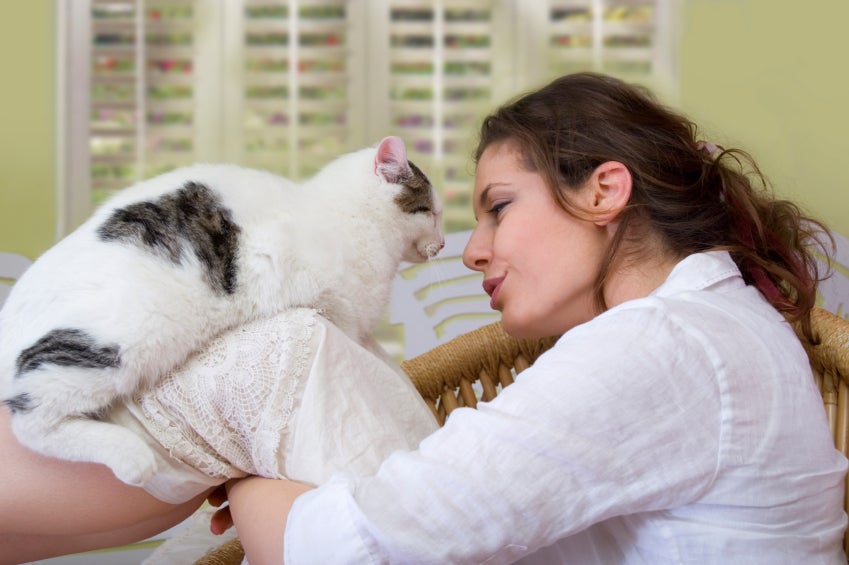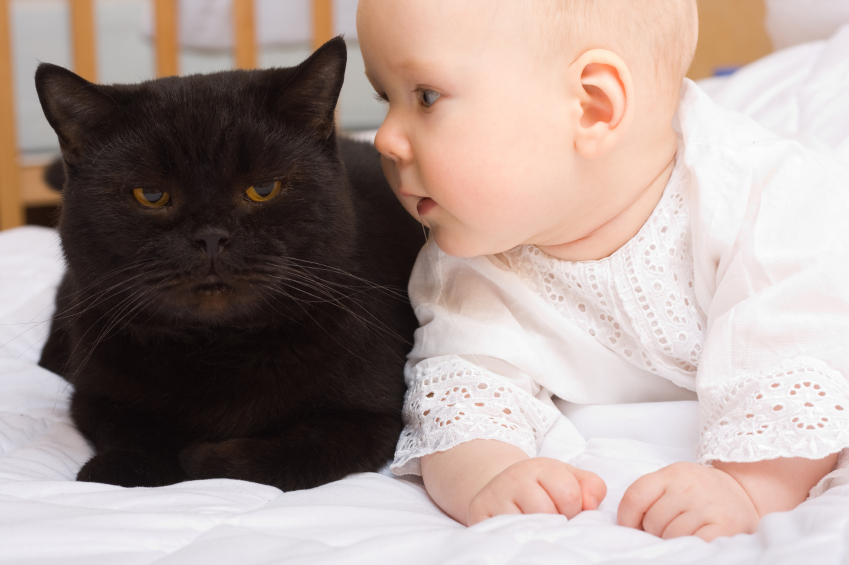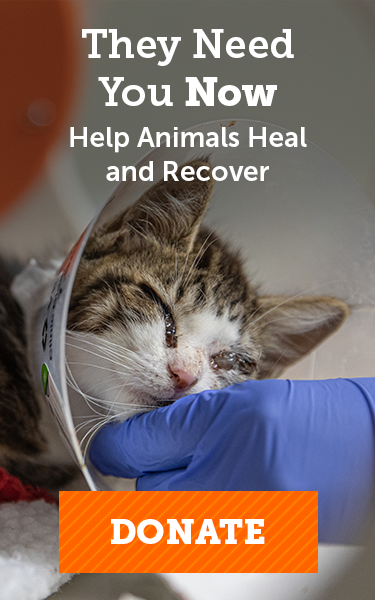
Cats and Babies
Although we know that cats and babies can co-exist harmoniously in the same family, there are still precautions that new or expecting parents can take to help safeguard both baby and feline.


Preparing for Your Baby’s Arrival
-
Keep your cats indoors, and do not befriend neighborhood cats while pregnant!
The feline parasitic infection toxoplasmosis can be caused by a cat eating small mammals or birds. This parasite in a pregnant woman can result in miscarriage, stillbirth or such birth defects as blindness, deafness, hydrocephalus or epilepsy.
Toxoplasmosis cysts are shed in the feces of infected animals. Since cats often use gardens as litter boxes, always wear gloves when gardening. Also wear gloves when washing raw vegetables and fruits, handling raw meat or scrubbing food prep surfaces, and avoid rubbing your eyes until your hands have been washed. It’s also best not to eat or feed your cat raw or undercooked meat. To prevent any cysts that are passed in the feces from becoming infectious, scoop fecal matter at least twice a day. - Some cats do not tolerate change well. These are the cats most likely to be affected by a new baby, so use the entire pregnancy to slowly prepare them. Play tapes of baby noises to acclimate your cat to the new sounds she's about to hear, or rub baby lotion on your hands before engaging in a pleasant activity with your cat to create positive associations with baby odors. Set up nursery furniture as soon as possible, and allow your cat several weeks to investigate before you select surfaces to declare off limits—such as the changing table and crib. Then, at least one month before the baby arrives, make the surfaces unwelcoming. Cut sheets of cardboard to the size of the furniture surfaces and cover one side with double-sided adhesive/masking tape. Cats tend to avoid sticky surfaces, and by the end of the month should learn to steer clear of these sites.
- If the litter box has been kept in the soon-to-be nursery, begin several months ahead of time to move it a few inches a day to its new location. If the transition is made too quickly, your cat may return to soil in his old spot. Covering that area with a solid object like a diaper pail or dresser may deter him.
- Finally, any cat care routines that will be shifted from a parent after the baby arrives should actually be switched one to two months before the birth. These might include feedings, grooming, play sessions and sleep locations. The cat may need time to adjust to the style and skills of the new caregiver.
After Your Baby is Home
- When you first arrive home from the hospital, peacefully greet your cat in a quiet room without interruption. Once you've had a few minutes to reconnect, let in everyone else—partner, baby, grandparents, baby nurse and other well-wishers.
- Place a used receiving blanket or piece of infant-wear in a quiet area where the cat can investigate it. Make sure that the crib and other baby sleeping-locations are off-limits to the cat. A newborn cannot turn over or even move her head at first, so a heat-seeking cat who chooses to cuddle up close to the baby's face could make it difficult for the child to breathe. Close the door to the nursery when the baby is napping. If there is no door, either install a temporary screen door or place a crib tent over the crib to keep the cat out. These precautions also prevent the cat from urinating in the crib, something she may try if extremely stressed.
- With the baby safely at rest, now's the perfect time to grab a catnap with your favorite feline.
